
18-09-2025 16:14
 Bernard Declercq
Bernard Declercq
Hello,I am looking for a copy of following paper:H

11-09-2025 16:57
Our revision of Marthamycetales (Leotiomycetes) is

03-09-2025 12:44
Hi to somebody.I would like to know your opinion o

15-09-2025 14:40
 Nicolas VAN VOOREN
Nicolas VAN VOOREN
Hello.I'm searching for a digital copy of the seco

14-09-2025 22:16
Philippe PELLICIERApothécies petites jusquà 3 mm, oranges, avec de

13-09-2025 14:01
Thomas Flammerdark brown apothecia, splitIKI-Spores biguttulate

10-09-2025 17:18
 Blasco Rafael
Blasco Rafael
Hola, encontre este estiercol de vaca estos apotec

13-09-2025 14:10
Wim de GrootWe found this hymenoscyphus on rubus fruticulosis.
Pulvinula sp
Sylvie Le Goff,
18-09-2025 19:40
Pensez vous que le genre Pulvinula puisse correspondre à ma récolte? sans conviction!!!
Apothécie orange, sessile, non poilue, de 0,5 à 1cm de diamètre , récolté sur sol sableux parmis la mousse dans une prairie humide amphibie .
Asques sans crochet , longueur 244 µm en moyenne, octosporés, IKI -
Paraphyses très longues, filiformes et courbées à la partie supérieure, avec parfois un contenu granuleux orange
Spores rondes, lisses, multiguttulées, diamètre 14 µm
Merci pour votre aide éventuelle
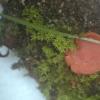
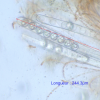
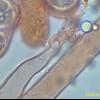
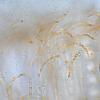
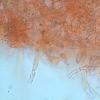
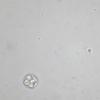
 SPORES-RCSDS-X-1000-250918191359849-0001.jpg
SPORES-RCSDS-X-1000-250918191359849-0001.jpg